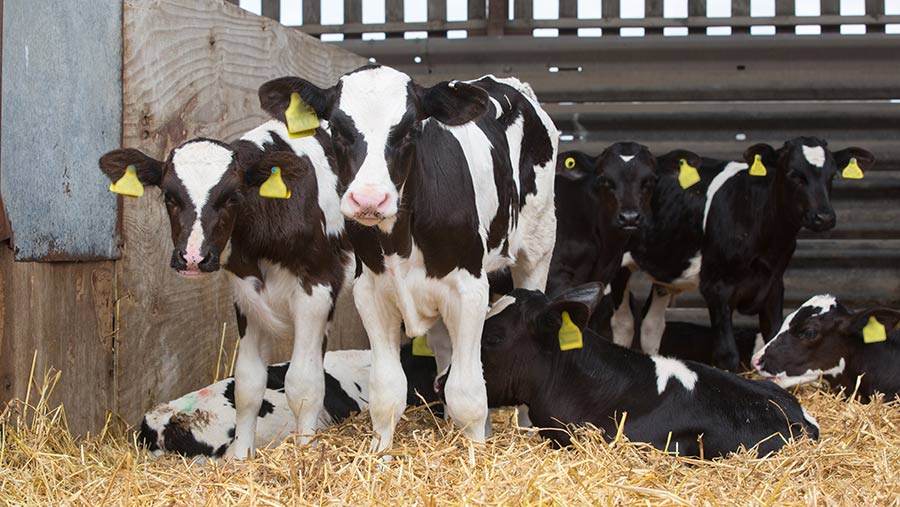Opinion: More needs to be done to market dairy beef
 © Tim Scrivener
© Tim Scrivener We are two-thirds of the way through calving our autumn block and I’m thankful that we have tightened it down to just six weeks this year.
The exertions of 12 weeks of calving back in the spring are still fresh in the memory, and the 2023 season will come around equally quickly. I have no idea how all-year-round calving farms manage.
Our preference has always been for spring calving, but one of the reasons for going split block was to reduce the number of calves born during the peak.
See also: How spring-calvers can prepare for end of bull calf euthanasia
We breed replacement heifers in the spring, and our autumn herd is run as a flying herd and served entirely to beef, with a plan to sell all the calves as quickly as possible.
This should reduce the workload of the second calving block and ensure it is kept as “light touch” as possible.
That said, all calves are still fed four litres of refractometer-tested colostrum at birth and receive the same levels of husbandry as any of our spring calves.
Being TB-free for the first time in nearly 12 months, we had hoped the autumn calves would be a welcome additional income stream, but sadly the prices seem to have fallen through the floor.
Our local market has had to pen calves outside for the past couple of weeks due to the overwhelming number of entries, and decent calves have routinely made less than £50.
We have also had more than our fair share of calving difficulties – twins, backwards calves, a prolapse and a few very large ones.
In some cases, it would have made more sense to send calves to the abattoir for processing, which seems like madness when they are pedigree beef-sired animals.
We might as well have served to dairy and at least given the cow the easiest possible calving.
The move away from euthanasia of bull calves is of vital importance for upholding the reputation of the dairy industry, but particularly for farms like us using grazing-type genetics, and there is still no silver bullet to solving this issue.
The price of calves is not a strong or reliable enough incentive to make using beef bulls an attractive option when you factor in downsides such as TB and calving ease.
Sending calves to the abattoir is easy and convenient for farmers, but the Arla eight-week rule makes this impossible for many, and other milk buyers will no doubt follow suit.
In the eyes of the consumer, is it ethically any better to slaughter a calf at a couple of months old rather than at birth?
At least it is used for food, and there certainly seems to be demand for this meat based on the abattoirs’ willingness to collect the calves.
If this source of cheap meat is taken away by legislation, where will the factories source it from? Ironically, probably overseas.
To improve the margins in rearing dairy beef, more work needs to be done to create a market for it, including promoting its lower carbon footprint (although this is unpalatable for suckler farmers).
Meanwhile, we must focus on what we can control, and that means rearing the calves we have with care as efficiently as possible.
Reputation is essential, but it must go hand in hand with generating profit.

